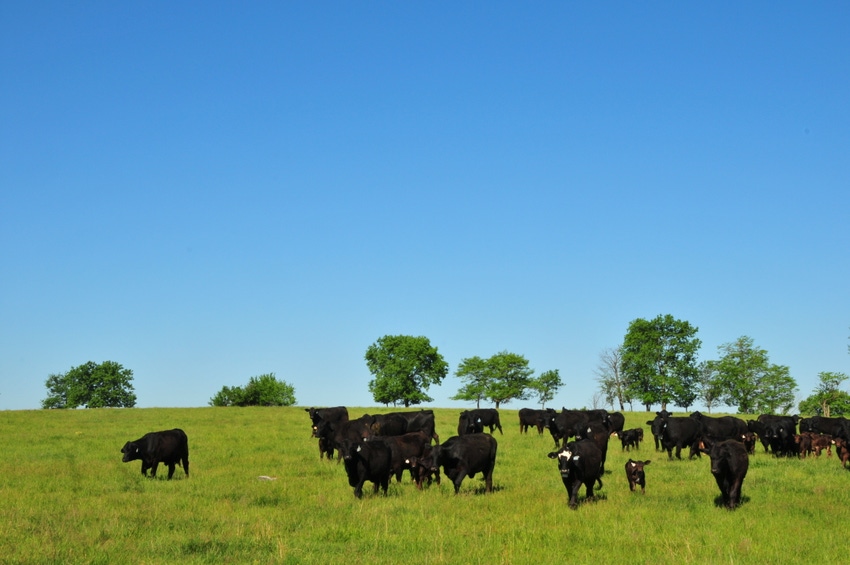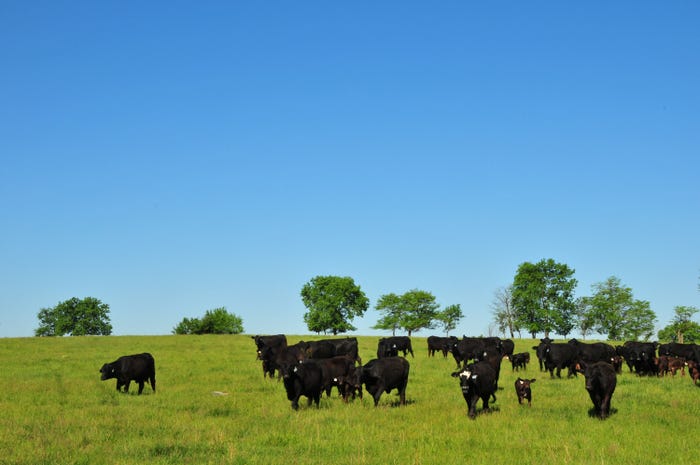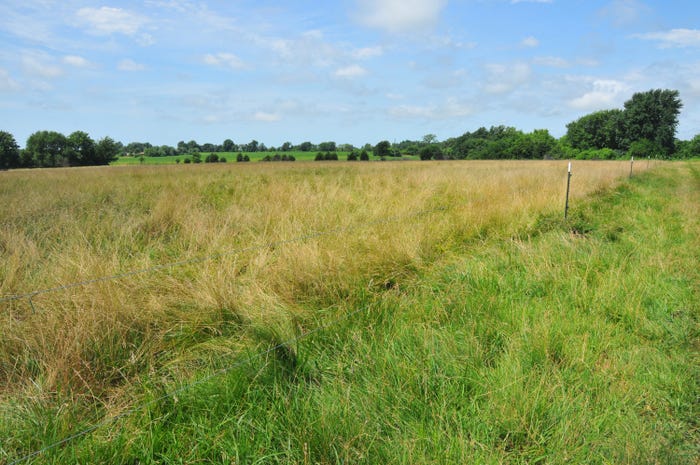New option for controlling “summer slump” on infected fescue pastures
Running a spray rig over your infected fescue instead of a brush hog may be the answer to managing fescue toxicity in cattle.

“I can run a sprayer cheaper than a brush hog.”
That’s Jason Locke’s summation of how he deals with what seems like never-ending acres of endophyte-infected fescue pastures on the West Ranch, a part of Circle Angus Ranch in Missouri.
One common way of dealing with the effects of fescue toxicity in cattle is to mow pastures as seed heads appear. That’s because the seed heads are the most toxic part of the plant, containing 3 to 6 times as much ergot alkaloid as do the leaves. But most fescue pastures have to be mowed two to three times a year. And at about $15 per acre per mowing, that adds up.
However, four years ago, Locke heard of a new approach to managing infected fescue pastures — spraying with a herbicide primarily designed for weed and brush control. Locke ran his own independent trials using the herbicide (Chaparral) and hasn’t looked back.
The reason seed heads are critical in creating the problems that occur in cattle grazing infected fescue is because the cattle will eat the seed heads with enthusiasm as they begin to form, thus getting a strong dose of the ergot alkaloids that are toxic to cattle. The alkaloids help the plant prosper and withstand heavy grazing, but present big problems for cattle producers because they constrict blood flow to the extremities.
Those problems primarily manifest themselves as heat intolerance. During the heat of the summer, infected cattle will seek out water holes and shade instead of grazing. Weight gain in calves is reduced and pregnancy rates are less when breeding occurs on infected pastures. The reduced production is estimated to cost the beef industry $1 billion per year.
The herbicide, however, when applied from when seed heads start to emerge through the boot stage, suppresses the formation and production of the seeds. But it will cause some yellowing in the fescue and stop growth for several weeks after it’s applied, so pasture management becomes critical, says Scott Flynn, field scientist with Dow AgroSciences.

However, it prevents cattle from selectively grazing the seed heads, he says. And since the plant isn’t putting resources into reproducing, it produces higher quality forage later into the season once it’s suppressed. According to Flynn, crude protein jumps 40% in treated pastures, dry matter digestibility jumps 11% and water-soluble carbohydrates increase 9%.
According to Glen Aiken, a researcher with the ARS Forage-Animal Production Research Unit in Lexington, Ky., suppressed fescue can be managed either with rotational grazing or continuous grazing. If you want to increase other grasses, continuous grazing with suppression is the way to go, he says. That’s because bluegrass, orchard grass and other desirable species will head out, but the fescue won’t. So you’re building a soil bank of seeds of other grasses.

The left pasture is untreated, the right is treated.
Rotational grazing allows you to increase carrying capacity, he says. A cattle producer can treat a fourth to half of the infected pastures while grazing untreated pastures early in the grazing season. Because the fescue doesn’t put resources into reproduction, forage quality stay higher later in the year, Flynn says.
About the Author(s)
You May Also Like



